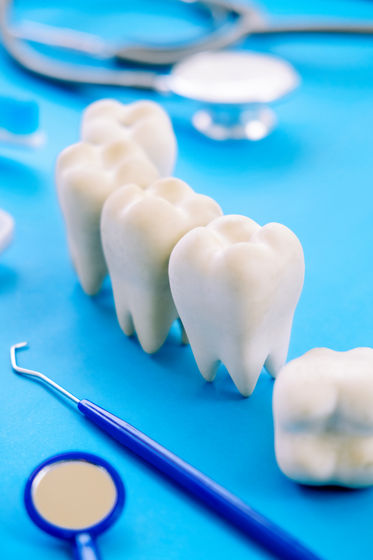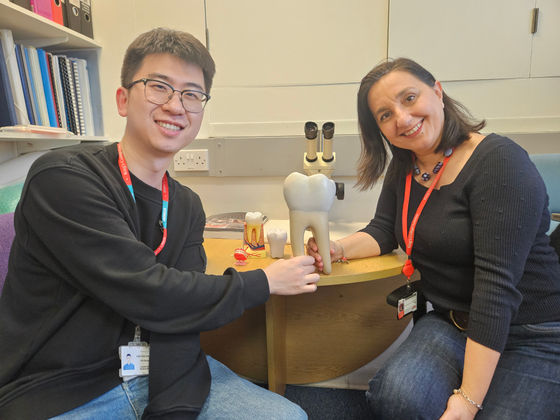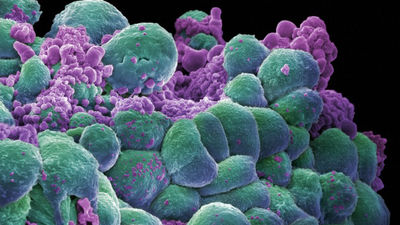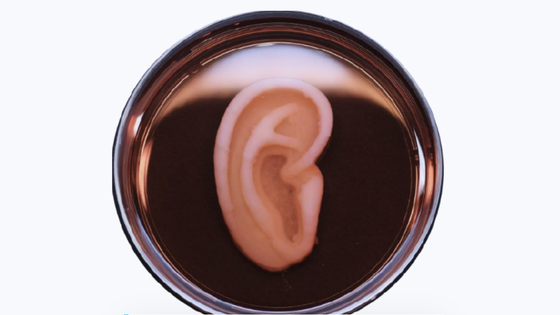Technology to cultivate one's own 'teeth' to replace implants and fillings

Sharks and elephants grow and replace their teeth many times in their lives, but humans only have permanent teeth once they grow in, so if we lose a tooth due to decay or an accident, we have no choice but to replace it with a false tooth or dentures. A new material that could lead to the realization of regenerative medicine by culturing such teeth from a person's own cells and making them into natural dentures has been successfully developed, reported in the peer-reviewed scientific journal ACS Macro Letters.
Generating Tooth Organoids Using Defined Bioorthogonally Cross-Linked Hydrogels - PubMed
Lab-grown teeth might become an alternative to fillings following research breakthrough | King's College London
https://www.kcl.ac.uk/news/lab-grown-teeth-might-become-an-alternative-to-fillings-following-research-breakthrough
Lab-grown teeth could offer alternative to fillings and implants, scientists say | Live Science
https://www.livescience.com/health/lab-grown-teeth-could-offer-alternative-to-fillings-and-implants-scientists-say
Lab-Grown Teeth Are Another Step Closer to Reality, Scientists Reveal : ScienceAlert
https://www.sciencealert.com/lab-grown-teeth-are-another-step-closer-to-reality-scientists-reveal
'Both fillings and implants are artificial, do not fully restore the function of natural teeth and may have long-term complications,' says Xuecheng Zhang, a researcher at King's College London.
Technology to form teeth from cultured cells is expected to be an option for dental treatment that does not rely on artificial materials, which are difficult to maintain, but to achieve this, a material that can grow into three-dimensional dental tissue by reproducing the tooth development process is required. To date, biomaterials such as collagen and ' Matrigel ' have been researched as such materials, and although some success has been achieved, there is an issue that it is difficult to control and regulate the cell growth process.

On the other hand, the 'Bioorthogonally Cross-Linked Hydrogels' developed by Chan's research team this time can adjust the environment surrounding the cells according to the tooth growth process by changing the raw material and concentration of gelatin used as a polymer material. Furthermore, by using a material that has almost no effect on the chemical reactions caused by cells, the communication between stem cells by exchanging signal molecules is not hindered.
'This means that when we introduce cultured cells, they can signal to each other and start the process of tooth formation. Previous attempts have failed because they sent all the signals at once. But this new material releases the signals slowly over time, mimicking what happens in the body,' Chang said.
Chan (left) and co-author of the paper, Anna Angelova Volponi (right).

The hope is that the technique will eventually allow cells to be taken from a patient and used to create tooth-forming substances such as enamel, cementum and dentin, which, unlike metal implants, can repair themselves and bond with jawbone tissue.
Ideas for this have already been proposed, such as transplanting young cell tissue into the area where the tooth is missing and regenerating it inside the mouth, or culturing the entire tooth first and then transplanting it.
'As the field of regenerative dentistry develops, the integration of innovative technologies such as these has the potential to revolutionize dental care, providing a sustainable and effective solution for tooth repair and regeneration,' said Volponi.
Related Posts:
in Science, Posted by log1l_ks







